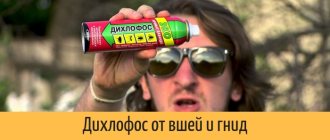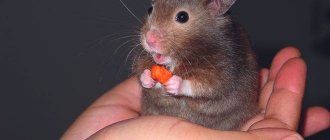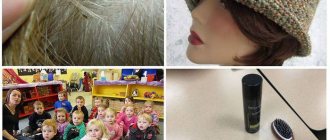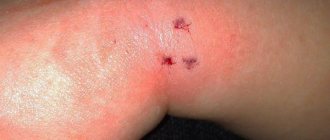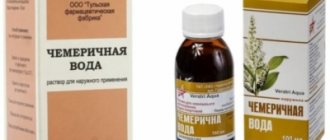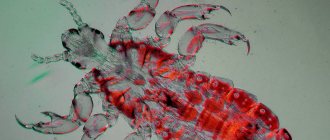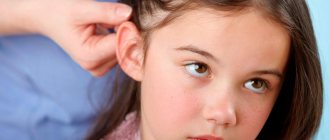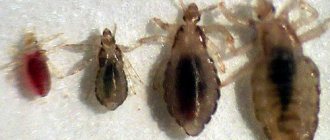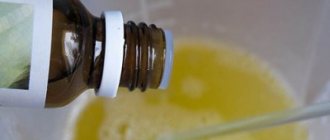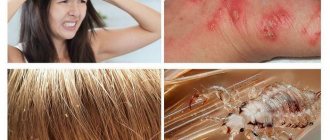- about the author
- VK profile
Svetlana Tarasova
Hairdresser-stylist with more than 8 years of experience, expert in the field of haircuts, styling, hair care, coloring.
Currently, pediculosis is a fairly common disease that affects both children and adults. In this case, the main sign indicating the presence of lice are nits on the hair, from which adult individuals subsequently grow.
Where can nits come from, symptoms
It should be noted right away that nits are the eggs of a female louse, which she begins to actively lay when she lands on a person’s head. In turn, the louse itself can appear in the hair in the following ways:
- in close contact with a person infected with lice (in public transport, places with large crowds of people, etc.),
- as a result of sharing personal hygiene items (towels, combs), hats and clothing,
- sexually (if we are talking about pubic lice).
The main symptom indicating the presence of nits is the appearance on the head of whitish capsules attached to the hair at a distance of 0.5 cm from the scalp. At the same time, immature lice do not cause any other symptoms.
REFERENCE. The most pronounced signs of pediculosis begin to appear with a significant increase in the number of adult individuals.
There is almost continuous itching of the scalp, wounds form at the site of scratching, the person’s sleep is disturbed, he becomes nervous and restless. In especially advanced cases, wounds may become infected and suppurate.
Memo for parents on the prevention of head lice
This is the name of the information sheet, which reveals the basic concepts regarding the disease: causes, symptoms, methods of treatment, features of the life of lice. It may contain pictures on the topic of parasites, infection, and hair habitats. If you have an idea of what lice are, you can avoid infestation. These are ectoparasites that crawl from one person to another. This is how they spread. Insects feed on human blood and lymph fluid. They live on the head and are here all the time: when they are awake, they feed, they reproduce.
There is body lice, but this type of disease is more common under unfavorable conditions: in large groups, where people do not always follow the rules of hygiene, and there is also a low cultural and social level of society. Head lice in children in kindergarten is diagnosed much more often. Moreover, the cultural and social level of development of society does not play a special role, since the method of transmission of lice is simpler - it is enough to touch the hair of an infected person, for example, in public transport or at a concert, as well as preschool and school institutions, as a result, the insects will have time to crawl to a new sacrifice.
The average lifespan is indicated, since the lifespan of lice depends on environmental conditions and can increase as well as decrease. Every day, adults lay 4-6 eggs, and sometimes more - up to 10 eggs. The duration of development of the embryo inside the shell is up to 7 days. It then takes about 2 weeks for the larva to develop to the mature stage. After this, the parasites begin to multiply. This leads to an increase in the intensity of symptoms:
- the child begins to complain of severe itching;
- obsessive movements appear because the head is very itchy;
- dermatitis develops, this pathological condition is accompanied by peeling, hyperemia, and rash;
- traces of bites are visible on the skin: swelling with dried blood in the center;
- nits are found, adult lice are found near the outer integument (at a distance of 1-2 cm above the outer integument);
- the child may feel movement on the skin;
- irritability appears, which is due to deterioration in the quality of sleep, children often become aggressive, the level of attentiveness and mental performance decreases.
Preventing the development of pediculosis is only possible if hygiene rules are followed. It should be noted that children cannot always independently control the quality of hair washing or the cleanliness of the hair accessories and hats they use. For this reason, adults should study the causes of infection in order to monitor the condition of children's heads:
- physical contact, lice are often found in kindergarten, as children constantly touch their hair while playing;
- using other people's things: hairpins, combs, hats, towels and others;
- visiting a pool, swimming in a pond with stagnant water (here a child can pick up parasites and then bring them to a preschool);
When infected, complications sometimes develop. For example, children develop allergies. Diseases and pathological conditions that may develop:
- sepsis;
- typhus;
- lymphadenitis;
- blepharitis;
- conjunctivitis.
If lice is discovered in kindergarten, preventive measures are as follows:
- limiting physical contact with infected people;
- regular inspection, at home parents should check the head every 5-7 days, if lice are found in the garden, then this should be done more often - 1 or 2 times every day;
- careful hair care: the head should be washed as it becomes dirty, the hair should be cut regularly;
- treatment with essential oils: apply 1-2 drops of the substance to the hair or prepare an aqueous solution based on it; spray the hair with this product using a spray bottle;
- They use special elastic bands (a preventive measure for girls) containing capsules with essential oils; they do not absorb moisture and continue to act for 10 hours.
Signs of lice in a child
Allergic reactions in children
Download the memo
To take a closer look at the information sheet, you can download it and read it at home. This will allow you to periodically return to the information you have read if signs of head lice appear and stop them.
PEDICULOSIS IN CHILDREN: MEMO FOR PARENTSDownload
How do living individuals develop and what do they eat?
In its development, an adult louse goes through several stages, which in total can last for 2-4 weeks:
- Stage 1 – the female louse lays eggs (nits) approximately 1 mm in size.
- Stage 2 – the larva hatches (this occurs approximately 9 days after the egg appears). Its size is 1.5 mm. This is the first stage of the nymph.
- Stage 3 – the second stage of the nymph begins (1.75 mm).
- Stage 4 – third nymph stage (2 mm).
- Stage 5 – the appearance of an adult male (2.4-3.6 mm) or female (2.3-3 mm).
IMPORTANT. It should be kept in mind that female lice are very fertile and lay 5 eggs (nits) on their hair every day. Having noticed the first signs of the disease, it is necessary to immediately begin treatment.
Living lice lead a parasitic lifestyle and feed on human blood. In this case, the larvae begin parasitizing immediately after emerging from the egg. To grow, they need to feed every 2 hours. An adult requires a minimal amount of blood to maintain life.
Why lice appear - a bad sign
There are also negative superstitions about lice and other parasites.
- If they appear on a woman’s temples, there will be many envious people.
- On the forehead - grief in the near future.
- On the crown - your name will be defamed.
- Appeared on a man’s crown - difficulties, poor health.
The most negative sign of the appearance of lice portends serious illness and financial troubles. Bankruptcy and property damage are possible. When parasites appear, it is better not to do anything rash.
- There are a lot of lice around the forehead - difficulties are just beginning and you need to be prepared for anything.
- On the back of the head - the black stripe will not last long and will end soon.
- The appearance of lice in all people living under the same roof indicated robbery, fraud, fire, even the death of one of the people.
- A girl has parasites - she may have problems communicating with men, a guy has problems, and will have problems communicating with women.
- If parasites appear in children, financial difficulties are coming for parents.
- Crawled out onto open areas of the body - poverty.
- If you do not wash your hands after holding a louse, you will die severely.
Our ancestors, who believed in omens, knew how to prevent the events they predicted.
In order for the signs about parasites not to come true, it was necessary:
- have a talisman or talisman in the house;
- laugh more, have fun;
- avoid conflicts, compromise;
- pray more, light candles in church;
- don't put your hat on the table.
Humanity got rid of widespread pediculosis not so long ago. A couple of centuries ago, lice felt impressively in the hairstyles of noble ladies and in the heads of commoners. In those days, there was an opinion that the absence of lice was a sign of a person’s imminent death. The parasites crawling over the deceased guaranteed him a pass to heaven.
So, why do lice appear, according to people who do not agree to accept the scientific explanation of the causes of lice:
- Parasites colonize the head before grandiose changes in a person’s life.
- Lice on the frontal part of the skull - foretells upcoming difficulties and trials. If insects have chosen the back of the head, the black streak of life is left behind.
- Linen lice appear on the eve of financial disasters.
- Infection of all family members with head lice at the same time foreshadows the death of a relative or loss of property.
- The omen interprets lice in a child as a sign of the financial failures of their parents.
- An abundance of insects on the head means unexpected wealth.
The last sign on the list is the most favorable and has ancient roots. She advises not to make attempts to get rid of insects until the wealth falls into the hands of a lucky person with lice, otherwise good luck can be frightened away.
However, you should not wait long for the profit promised by lice. Parasites multiply quickly and cause unbearable itching and skin diseases. As a result, instead of wealth, you can end up with health problems.
How to distinguish live nits from dead ones
Live nits can be easily distinguished from dead ones. However, the main differences primarily lie in appearance.
So, the following signs are characteristic of a living nit:
- White color,
- when illuminated, the surface of the egg shines,
- the capsule has a convex shape.
In addition, if you try to crush a live nit, it will make a characteristic click.
What do dead nits look like, why can they be dry (empty), are they transmitted?
Dead nits look like this:
- have a duller and faded appearance,
- the surface of the egg acquires a gray-yellow tint,
- capsules lose their convex shape,
- There is no click when pressed.
It should be noted that the louse egg becomes empty after the live larva emerges. At the same time, the shell itself continues to hang on the hair.
Dead nits are not transmitted in any way . However, in any case, they will have to be removed.
Types of pediculosis and methods of its treatment
Have you been fighting against PARASITES for many years without success?
Head of the Institute: “You will be amazed at how easy it is to get rid of parasites just by taking it every day.
Pediculosis is a disease in which a person becomes infected with lice. These insects parasitize the hair and skin, feeding on human blood. They can appear in adults and children, men and women. Many people are sure that lice are the fate of sluts. However, practice shows that parasites do not choose hosts based on their lifestyle.
To protect yourself from head lice, you need to know where lice come from and what treatment methods help get rid of them.
Our readers successfully use Intoxic to get rid of parasites. Seeing how popular this product is, we decided to bring it to your attention. Read more here...
Types of lice
Three types of lice can parasitize the human body:
- head;
- clothes or linen;
- pubic.
All types of lice feed exclusively on human blood. Therefore, man is the only owner for them.
Head lice
The head louse lives on the scalp, as well as on the mustache and beard. The legs of this type of lice are adapted to living on hair that has a circular cross-section. To recognize parasites, you need to know what head lice look like.
The body length of an adult male is 2-3 mm. Females are somewhat larger and reach a length of 4 mm. The body of head lice has a gray tint. When the insect drinks blood, it acquires a red-brown color.
The lifespan of parasites is about one month. Females lay eggs called nits. A nit is a capsule that protects the egg. It is covered with a sticky secretion that securely attaches the egg to the hair. Eggs mature on average within 10 days. The nit is equipped with a lid through which the mature larva emerges. Within 6-10 days the larva reaches sexual maturity and begins to lay eggs.
Head lice can be recognized by identifying nits in the head. Moreover, both living and dead nits can be found on the hair. When the larva leaves the capsule, it remains hanging on the hair.
Head insects do not have wings and, contrary to popular belief, are not able to jump. However, these insects are quite agile. Due to the structure of their legs, they are able to quickly crawl from one person to another.
Can there be nits without lice, what to do if there are nits but no lice
Sometimes there are cases when nits are found on the head, but there are no adults. This can happen if the hair has been exposed to a chemical. For example, painting with a dye containing hydrogen peroxide can kill adult lice. However, the harmful effects of this chemical were not enough to destroy the eggs themselves.
When faced with such a situation, in any case, it is necessary to take measures to eliminate nits, since after a short time living larvae can hatch from them.
Folk remedies
Among the folk methods that facilitate the process of combing out dead lice eggs, the following means are widely used:
- cranberry juice. Cranberries effectively destroy the adhesive component. It does not spoil the hair structure, gives the curls softness and elasticity;
- dust soap;
- essential oils, which must be added in a ratio of 1 to 3 to the vegetable base, for example, sunflower, olive oil;
- hydrogen peroxide. This product is diluted with warm water in a ratio of 1 to 3. Treat the curls, put on a plastic bag for 20 minutes, then comb out with a comb;
- diluted acetic acid. To prepare the solution, dilute ½ cup of 9% vinegar in 2.5 cups of warm water. Then wet your head and put a plastic bag on top. After 15 minutes you can start combing;
- hellebore water is diluted with water in a ratio of 1:3. Leave on the head for 15 minutes, then comb out with a comb.
Before applying any product, you should carefully read the instructions and conduct a hypersensitivity test.
Combing out nits is a rather painstaking task, which allows you to get rid of lice larvae efficiently and permanently. Otherwise, the risk of re-infection increases.
Learn more about head lice with the following articles:
- symptoms and signs of the disease;
- how can you become infected with lice;
- about the prevention of pediculosis;
- how to quickly get rid of nits;
- how to treat pediculosis during pregnancy;
- what diseases do lice carry, why are they dangerous;
- what do lice bites look like?
How to get rid of dry (dead) nits on hair
Unlike lice, it is quite difficult to remove nits from the head, since they are firmly attached to individual hairs. However, the most common methods of elimination are the following:
- head shaving - the most radical method that allows you to get rid of nits literally in one go. However, it should be understood that this option is not suitable for everyone, especially when it comes to the female gender.
- combing – in this case, the eggs are removed using a special fine-toothed comb.
- removing dead nits with your fingers – the hair on the head is divided into separate strands and the eggs are removed from them one by one. This method is not the most effective, since it does not allow you to get rid of dry shells 100%. In addition, such a procedure will take quite a lot of time.
Ways to fight
If you suspect the presence of lice and nits, do the following:
- purchase specialized shampoos: Veda, Nix, Paranit, Hygia, Pedilin; sprays against lice and nits: Nyuda, Pedikulen-ultra, Para-plus or anti-lice ointments: Benzyl benzoate, Sulfuric and treat the head with them, following the instructions. This will neutralize most of the parasites;
- comb out nits and lice using a special comb or an ordinary comb. It is necessary to comb each strand.
IMPORTANT! This procedure should be repeated regularly, every day for a week or two weeks. It is advisable to comb your hair with a comb twice a day. However, you need to take into account that this will not give a 100% result: lice and nits may remain on the hair.
One way to get rid of nits and lice is to visit a doctor or special sanitary service departments, where they will quickly and accurately remove the parasites.
Pubic lice are removed in the same way. It is advisable to purchase special preparations for pubic lice.
To kill body lice, clothing should be disinfected. This must be done in a steam-formalin chamber. At home, it is enough to boil clothes with the addition of vinegar or anti-lice shampoo, and then wash them.
How to remove dead nits from hair quickly at home
Currently, a fairly large number of methods for eliminating nits are known, ranging from mechanical action to the application of special chemical compounds to the hair.
So, the most well-known methods of influence include the following:
Combing
This method allows you to remove both living and dead nits. To do this, you must first buy a special comb at the pharmacy . Its distinctive feature is the presence of a large number of thin and frequent teeth, thanks to which the louse egg can be easily removed from the hair.
When combing, you should adhere to the following recommendations:
- the procedure should be carried out in a well-lit room,
- hair should be divided into separate strands,
- for convenience, the head can be slightly moistened or lubricated with oil,
- If your hair is very long, it is recommended to cut it a little.
You should be prepared for the fact that combing will have to be repeated more than once until the hair is completely free of nits.
Medicines
It is immediately worth noting that modern drugs against pediculosis are mainly aimed at destroying adult lice, as well as live nits. The most effective drugs include the following:
- "Nittifor" – used to combat lice, nits, ticks and fleas. Its active component is permethrin, which paralyzes the nervous system of the parasite and leads to their death. Nittifor can be purchased as a cream or lotion,
- "Foxylon" – hair lotion, the main component of which is benzyl benzoate. This substance easily penetrates the chitinous cover of parasites,
- "Pedilin" – it is based on the active substance malathion, which causes the death of lice and nits. Available in the form of shampoo or emulsion,
- other drugs against pediculosis.
REFERENCE. After using the above remedies, the remaining dead lice and nits will need to be additionally combed out using a fine-toothed comb.
Folk remedies
Many people faced with the problem of head lice often resort to various folk methods . However, you should be very careful here, since the use of this or that substance can be very dangerous.
In addition, folk remedies will also not eliminate dead nits on their own. After destruction, in any case, you will have to comb them out or remove them with your fingers.
So, the main folk remedies against nits include the following:
- treatment of the head with extracts of various plants (for example, a decoction of wormwood, beets, wild rosemary herb, etc.),
- kerosene mixed with vegetable oil - a fairly effective method of combating nits and lice. However, such a composition can cause severe poisoning of the body, as well as damage the scalp and hair. In addition, kerosene is very flammable,
- vinegar diluted with water – this product facilitates the process of combing nits out of hair. However, vinegar will not kill adult parasites. Moreover, if diluted incorrectly, you can burn your scalp.
Features of treatment in children
Treatment of head lice in children has a number of features that must be taken into account:
- Not all drugs are suitable for removing lice from a child’s head. Before use, be sure to read the instructions and ask at what age this or that product can be used,
- in the fight against lice, preference should be given to more gentle methods of action (for example, short haircuts, combing),
- Before using any drug against head lice, it is strongly recommended to consult a pediatric dermatologist or pediatrician.
ATTENTION. You need to choose folk remedies very carefully. Exposure of a child’s scalp to highly toxic substances such as kerosene, vinegar, etc. is not permissible.
Treatment
A comprehensive treatment is needed, combining the use of various drugs for head lice, as well as constant examinations with procedures for thoroughly combing out nits. Let's look at some products that are clearly effective against nits.
- crest. A basic tool for combating head lice of any stage and type. With its help, it is easier to carry out inspections, it removes parasites well from wet hair after washing and can even tear nits from their secretion. This is achieved due to the fact that the teeth of the combs are very close to each other and are made of metal.
- vinegar. By itself, it will not kill the eggs, but it will corrode the sticky substance, making them much easier to comb out. Use only table vinegar, not essence! Dilute it with water;
- cranberry juice. It works similarly to vinegar, but the effect is not as strong. But it does not irritate hair and skin;
- kerosene and dust soap. These products are so toxic that they affect nits even through a thick protective shell. But this toxicity also extends to humans, so you should be especially careful when using them;
Hygia anti-pediculosis shampoo. It is a mixture of the insecticide permethrin and acetic acid. Permethrin does not pass through the egg shell on its own, but vinegar eats it away and allows the toxin to affect the internal tissues of the embryo;
couple plus. Spray, supplied with a comb. Effective for targeted treatment of areas where nits are concentrated on the hair;
Pedilin is an effective medicine for nits, containing two insecticides (malathion and tetramethrin), which, when combined, are strong enough to kill lice eggs.
The following effective drugs are also suitable for nits: sprays for lice and nits, Paranit, Pediculen-ultra, Nuda and folk remedies for lice: tea tree oil, hairspray, hair dye, hellebore water, the use of which can be found on our website.
You have learned how to deal with nits, but do not forget about the possibility of allergic reactions to some drugs and strictly follow the instructions.
REFERENCE: all products used against nits are also effective against adult nits, so there is no need for two different types of therapy.
Read useful articles about nits on our website:
The exposure time depends on the product used and is specified in the instructions, but on average the drugs are kept on the head for up to half an hour. If you want to achieve a stronger effect, you can withstand them for longer, but this increases the risk of side effects.
IMPORTANT! Never use more than one drug per procedure. After this, you need to comb your hair, removing nits and adults. After this, you need to comb your hair, removing nits and adults.
After this, you need to comb your hair, removing nits and adults.
If you carefully apply the product to your head, this will not cause any difficulties, as the attachment of the eggs will be weakened.
Comb each strand, paying special attention to the temporal and occipital areas. When using strong nit control products, it may take just one application to completely get rid of lice. When using strong products, the fight against nits can take only one application to completely get rid of lice.
When using strong nit control products, it may take just one application to completely get rid of lice.
Sometimes a repeat procedure may be required. But do not use the same treatment method more than three times - if it is ineffective, use other drugs.
Prevention of lice and nits
In order to avoid the appearance of head lice, you must adhere to the following simple tips:
- strictly observe the rules of personal hygiene,
- change bed and underwear regularly,
- periodically boil clothes during washing (if the fabric allows it),
- take good care of your hair (comb your hair regularly),
- carry out preventive examinations for the presence of nits and lice,
- under any circumstances use other people’s hats, combs, hairpins, or towels.
In addition, owners of long hair should pay attention to their hairstyle before going out into public places. It is not recommended to let your hair down, as this increases the risk of lice infection.
FAQ
Often, parents faced with the problem of childhood lice have the following questions:
Expert opinion
Eve
hair stylist
Ask a Question
The child was found to have nits, but no lice, why can this happen?
This situation is possible if the infection occurred very recently, that is, only one adult could have landed on the baby’s head, which immediately laid eggs. At the same time, the louse itself (especially if there is one or only a few of them) is quite difficult to notice. This is why it seems to parents that there are nits, but no lice.
Do dead nits click?
As noted above in the text, dead louse eggs do not produce a characteristic click when pressed on them . This is one of the distinguishing features between dead and living nits.
In conclusion, it should be noted that immediately after discovering nits on the head, it is necessary to immediately begin treatment for head lice. It doesn't matter whether they are dead or alive. In any case, lice eggs must be removed from the head.
- about the author
- VK profile
How to deal with head lice
First you need to examine the head and assess the extent of the damage. A fine-tooth comb will help you find lice. It is necessary to comb wet hair with it. Insects will remain between the teeth or on the comb. You can also comb dry hair, but it is easier to do it on wet hair. You need to comb your hair from the very roots.
Lice can be seen in good lighting and without additional equipment. Detecting nits is more difficult. They may look like hair product residue or dandruff. Nits are usually located behind the ears, along the hairline on the neck.
Combing hair is not only a way to detect parasites, but also one of the ways to combat them - mechanically. It only works in one case - if there are very few insects and their eggs in the hair, that is, immediately after infection. Careful brushing can remove all adults and individual eggs. But if even one nit remains, in a few days everything will repeat itself, the insects will multiply.
Important: if the disease is detected in one family member, it is necessary to check all other household members for the presence of head lice and nits. It is impossible to wash off lice with regular water.
They are not afraid of water and can live in it for up to two days. Regular shampoos don't help either.
It is impossible to wash off lice with regular water. They are not afraid of water and can live in it for up to two days. Regular shampoos don't help either.
If the hair is short, the treatment will be faster and more effective. With a short hair length, there is little space left for laying eggs, so the rate of parasite reproduction decreases. And it's much easier to process short hair. Shaving your head has always been the most effective way to control lice. But this is not always possible for aesthetic reasons.
Itching occurs mainly in the back of the head at the base of the neck, above the ears. It intensifies at night and is especially pronounced after shampooing, when the hair is still damp.
Children become restless, inattentive, and when examining the scalp, scratching and scabbed skin lesions can be detected.
Algorithm for examining the scalp for suspected pediculosis:
- Carefully inspect your scalp for lice bites, which appear as red or pinkish vesicles. Most often they can be found in the area above the ears and in the back of the head.
Take a magnifying glass and carefully examine the skin. At the base of the hair you can find the parasites themselves, which look like gray poppy grains.
Next, inspect your hair for lice eggs (nits). Nits are small white specks (3 - 5 mm) that look like dandruff. They cling to the hair. If you find a white speck on the hair that is not brushed off, but is tightly attached to it, then this is a nit.
If you find nits, take a fine-toothed comb or a special comb and a white sheet of printer paper.
Tilt your head slightly forward and run the comb through your hair several times. Flakes or grains resembling dandruff should fall onto the sheet, which look slightly grayish against the background of the paper. Try crushing the grain by holding it between your nails.
If during the crushing process you hear a cracking sound (click), then this grain is a nit, and the presence of lice on the head is beyond doubt.
Long-term head lice in children if left untreated can lead to
negative consequences
- the occurrence of serious infectious diseases, because the affected areas of the skin are open gates for bacteria to enter the body.
A frequent companion to pediculosis is lymphadenitis (enlarged lymph nodes that are painful when touched) of the neck and occipital region. The skin in areas of scratching is prone to suppuration, tangling of hair, and the formation of tangles.
